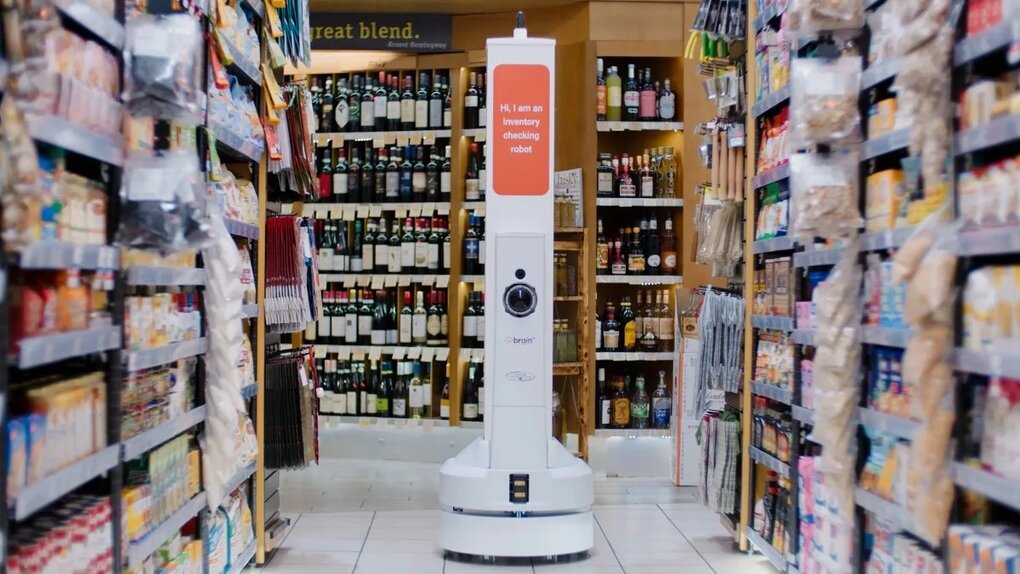San Diego Has Opportunity to Emerge as Leader in Artificial Intelligence
Published by Leonard Novarro and Rosalynn Carmen in Ai San Diego · Thursday 21 Mar 2024
Tags: Artificial, Intelligence, News
Tags: Artificial, Intelligence, News

inventory robot using software from San Diego’s Brain Corp. Courtesy of the company
Editor’s Note: This is the first in a weekly series of articles about artificial intelligence in San Diego.
My wife Rosalynn and I are the yin and yang of expectation. History is my inspiration, the future, however disruptive, is hers.
The philosophy of mutual forces working in opposite but interconnected direction originated in China around the time of Confucius. Some 2,500 years later, it’s alive in the way we have looked at things. And one of those things is technology. While Rosalynn embraces it, my motto has been “If it ain’t broke, don’t fix it.”
Until artificial intelligence.
Some 25 years ago, two years before we started our bi-weekly newspaper ASIA, Yahoo! and Google convinced the newspaper industry that it needed to contribute articles to the Internet and aggregate websites to market its material, which led many newspaper readers to conclude: “Why pay for news when you can get it for free.” That marked the death knell for newspapers, including ours.
As for Google, well…that is history.
We are not making the same mistake with AI — to ignore it. Yet, while we do embrace it, we do with a caveat. This is the first in a series of articles about what we see as bad as well as good in AI. We will also look at many of the changes already taking place and what is predicted for the future.
A significant change is how San Diego has become a leader in this technology.
When I moved to San Diego in 1984 to work for the old San Diego Tribune, this, indeed, was a sleepy town. Horton Plaza and the revitalized downtown, most markedly the Gaslamp District, was to change everything, so that by 2015 National Geographic, in a video on “startup cities,” ranked San Diego as “a best place for startups.” A strong entrepreneurial spirit fueled by a culture of collaboration, enhanced by an enviable academic structure led by UC San Diego was the key.
Industry-wise, San Diego also happened to be the home of a company called Qualcomm, which, in the next nine years, after the National Geographic piece, would become one of the most, if not THE most, respected company in the field of AI technology.
Take Snapdragon, the super brain of chips. Developed by Qualcomm in 2007. This revolution in microchip development allows several functions to be executed over multiple devices, such as mobile phones, laptop computers and house alarms, with a single command. Industry savants have likened it to having a powerhouse mini-computer in the palm of your hands with the ability, for instance, to drive a car, operate on the Internet, and master one’s phone, all at the same time and across different platforms.
That’s only a sliver of the work going on right now in San Diego in the field of artificial intelligence. The Contextual Robotics Institute of UCSD is another. The goal of the institute is to make robots understand their surroundings, learn from it and use that data to serve people in a number of ways, as first responders and companions, for example. To do so, UCSD brings together experts in various fields, from computer science to neuroscience, sharing labs to integrate the technology needed to move robots.
Other companies in San Diego taking part in robotic research include the Brain Corporation, which develops software to command robots in menial tasks, and Dexcom, which is working on medical devices to manage diabetes. In both cases, robots will have the ability to sense and interpret their environments and use that to make decisions, including reducing errors in manufacturing and improving quality control in manufacturing.
A host of other companies, from Acrisure Innovtion to ZS, are engaged in a wide range of AI research affecting dozens of industries. ZS alone employs about 13,000 people working out of 14 different offices. Another company, Motorola Solutions, focuses primarily on ways to protect people and property and employs another 21,000 people.
Other companies are focused on dozens of industries, including health care, aerospace, insurance and all facets of manufacturing. The AI industry is growing at such a rapid pace in San Diego that the San Diego Regional Economic Development Corporation, partnering with Booz-Allen-Hamilton and members of the AI community, is identifying clusters where AI and ML (machine learning) have been implemented and assessing the results.
The partnership has already concluded that instead of wiping jobs off the map, AI technology will create more jobs than it will destroy.
Silicon Valley is still the center of the tech and AI universe, but San Francisco as its urban partner has been declining for many reasons, including cost of living and homeless issues. Can San Diego succeed the Bay Area as the new urban center of tech, principally AI? Many feel it already has. What emerges in the next five years will, indeed, be interesting to watch.
Leonard Novarro is vice president of the Asian Heritage Society and author of WORDSLINGER: The Life and Times of a Newspaper Junkie.


